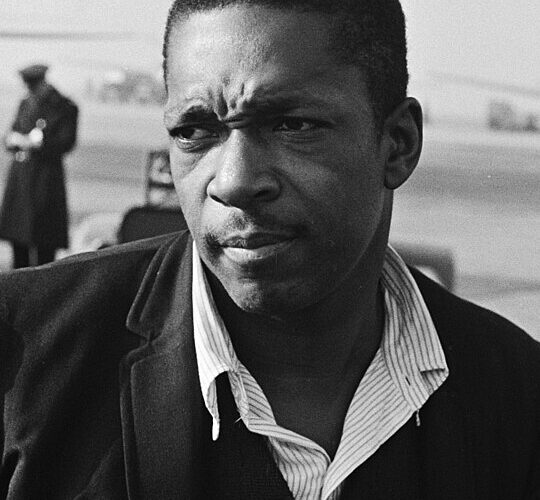By Jason Innocent
John Coltrane’s saxophone playing was not merely a technical mastery of the instrument but an expression of his journey of evolution and self-discovery. Born in Hamlet, North Carolina, in 1926, Coltrane faced numerous challenges and struggles. Early in his career, he battled addiction to drugs and alcohol. However, it was through overcoming these struggles and embracing sobriety that he found solace and purpose in his music. His horn became a vehicle for catharsis, allowing him to channel his emotions and experiences into his compositions. The transformative power of his music became a driving force that kept his horn blowing.
Coltrane’s music was deeply intertwined with his spirituality. In the mid-1950s, Coltrane experienced a profound spiritual awakening that shaped his life and music. He delved into various spiritual teachings, including Eastern philosophies and Christianity. Coltrane saw his music as a form of prayer and meditation, connecting with the divine and communicating profound truths. This spiritual quest and the desire to express the ineffable through his horn provided a constant wellspring of inspiration that fueled his playing. His seminal album, “A Love Supreme,” is a testament to his spiritual journey and its profound impact on his music.
Coltrane was an incessant explorer, constantly pushing the boundaries of jazz and searching for new avenues of expression. His unwavering commitment to innovation was vital to keeping his horn blowing. He was known for his relentless practice routines, spending hours honing his technique and expanding his musical vocabulary. Coltrane experimented with different musical forms and structures, embracing modal and free jazz and incorporating elements of Indian classical music and African rhythms. His groundbreaking compositions and improvisations, characterized by complex harmonic and rhythmic structures, showcased his desire to push the limits of what jazz could be. Coltrane’s insatiable curiosity and tireless pursuit of new musical possibilities ensured his horn remained an ever-evolving and vibrant force.
Coltrane’s dedication to artistic growth was unparalleled. He surrounded himself with exceptional musicians who challenged and inspired him, such as McCoy Tyner, Elvin Jones, and Jimmy Garrison. Together, they formed the iconic John Coltrane Quartet, a crucible for musical exploration and innovation. Coltrane’s commitment to collaboration and ability to create a space for others to shine enhanced his playing and propelled his artistic growth. He encouraged his bandmates to express themselves fully, creating a supportive environment that fostered creativity and experimentation. This commitment to constant improvement and the pursuit of musical excellence served as the fuel that kept his horn blowing.












